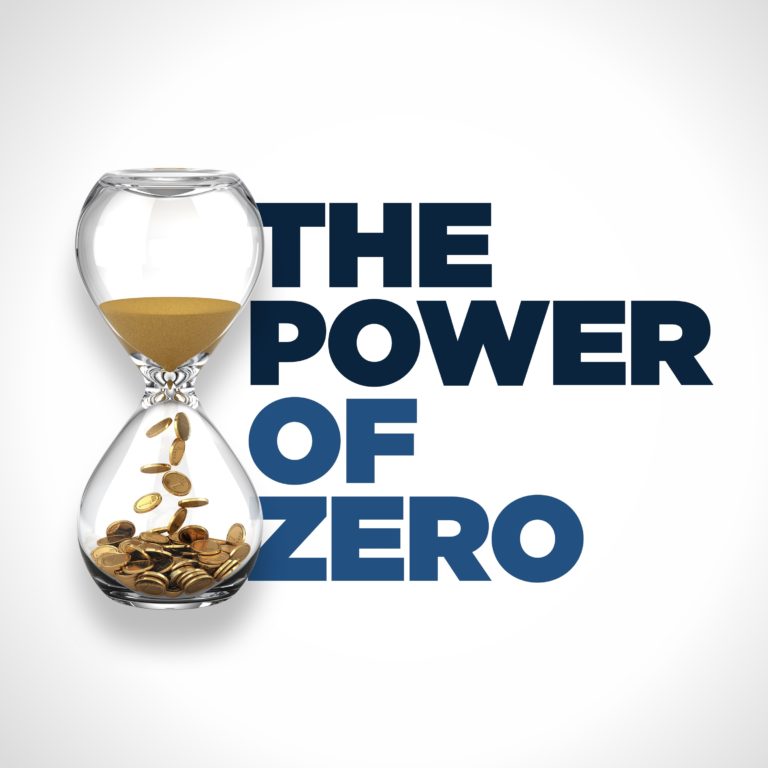Why Near-Certain Tax Rate Increases Pose a Critical Threat to Your Financial Security
My goal as a financial advisor is to give each client a roadmap for a secure retirement. In order to do that, I seek to help them avoid the two greatest retirement risks. The truth is that roadblocks loom large in retirement and too many people are fearful of outliving their money. This is the reason I’ve dedicated my professional life to becoming an expert in tax-free retirement planning through the philosophy of my mentor, David McKnight, an industry expert on tax-free retirement and author of the eye-opening book The Power of Zero.
Below, I’m sharing an excerpt from another of David’s powerful books, Tax-Free Income for Life. In this 2020 look at the very real risks facing retirees, he explains the first of the two greatest retirement risks – tax rate increases – and I believe it’s important information for you to understand if you want to enjoy a secure retirement. I share David’s words in the hopes that they inspire you to take control of your financial future and prepare for the risks ahead.
The First Great Retirement Risk
I’ve made the case in The Power of Zero, on The Power of Zero Show, and in the movie, The Power of Zero: The Tax Train Is Coming that because of our nation’s skyrocketing debt, higher taxes are inevitable and will be making a visit to your retirement plan in the very near future.
For years, the bearer of this bad news was former comptroller general of the federal government David Walker. Back in 2009, when the national debt was “only” $10 trillion, he was running around the country with his hair on fire making the case that the fiscal condition of our country was precarious at best, and destined for bankruptcy at worst. His Fiscal Wake-up Tour took him to college campuses across the country and ultimately landed him on 60 Minutes, where he warned of the need to dramatically reform our nation’s entitlement programs to avoid the bankrupting of America. He even made an Oscar-nominated movie about the nation’s debt crisis, called I.O.U.S.A. In 2011 he wrote a CNN op-ed that made the case that tax rates in our country would have to double in order to service the national debt and deliver on entitlement programs such as Social Security, Medicare, and Medicaid.
Well, here we are in 2020, with the publicly stated debt has ballooned to $23.5 trillion and Medicare and Social Security teetering on the brink of collapse, and all we hear from the media, the government, and a huge swath of financial experts is crickets. It’s a truth that’s simply too inconvenient to address. As David Walker said, it’s the “dirty little secret that everyone in Washington knows.” And this dirty little secret has enormous repercussions for retirees who’ve amassed the lion’s share of their retirement savings in tax-deferred vehicles like 401(k)s and IRAs.

Retirement Risks: The Math
Fortunately, a few forward-thinking advocates in academia understand the math behind our nation’s fiscal woes and have begun to amplify their warning cries to America. One of those lone prophets in the wilderness is Dr. Laurence Kotlikoff, of Boston University. He’s the foremost expert on an accountancy method known as fiscal gap accounting, an approach used by nearly every developed country in the world except— wait for it— the United States. Fiscal gap accounting projects a nation’s expenses (including benefits they’re required to pay by law) over a period of seventy-five years. It then compares those expenses to the country’s anticipated revenue over that same time frame. Is there a difference between what your country has promised in the form of programs, benefits, and services versus what it can actually deliver? If so, then your country has a fiscal gap. And that fiscal gap is your true national debt.
In order to quantify the fiscal gap for the United States, Dr. Kotlikoff calculated the net present value of the United States’ future financial shortfall (i.e., the difference between what we’ve promised and what we can actually afford to pay over the next seventy-five years) and has drawn a disturbing conclusion. Our true national debt isn’t $23.5 trillion, it’s closer to $239 trillion. In other words, we’d have to have $239 trillion sitting in a savings account today earning treasury rates, just to be able to deliver on all those promises. It’s worth noting that Dr. Kotlikoff revised this number upward from $221 trillion in 2018. The burden of our nation’s true debt load, it seems, is accelerating at breakneck speed.
I’ve often sparred with online “financial experts” who claim that all this talk about debt is much ado about nothing. It’s unnecessary fearmongering. After all, our debt-to-GDP ratio is only around 106 percent. It was worse after World War II and we managed to claw our way back from that! Here’s the difference: In the immediate wake of WWII, the true debt-to-GDP ratio was around 110 percent— not far from the official publicly stated debt-to-GDP ratio today. But when the fiscal condition of our country is viewed through the lens of fiscal gap accounting, our nation’s debt-to-GDP ratio today is revealed to be much higher than it was following WWII. Dr. Kotlikoff puts it much closer to 1,000 percent. To put this into perspective for you, the next closest country (that actually does practice true fiscal gap accounting) is Japan, clocking in at “only” 250 percent. In other words, our financial outlook is four times as dire as that of the next worst country in the world. If this were a race toward insolvency, we’d be winning by a landslide!
Yet those same online gurus continue to protest. According to these “experts,” when the time comes to make good on all these unfunded promises, we’ll simply print our way out of it! We’ll return to seventies-style inflation in order to keep our promises to America’s baby boomers. Here’s what these financial gurus fail to appreciate: Social Security, Medicare, and Medicaid are all tied to inflation. When you print more money, inflation goes up, and the cost of these programs rises commensurately. So by printing more money, you aren’t really solving the problem. You’re just growing the cost of these programs at the very same rate at which you grow the supply of money.
Others affirm that we’ll continue to borrow more and more money from countries such as China. As with printing money, there’s a fatal problem with this approach. Eventually, our debt will get so big that we risk a sovereign debt crisis. This is when other countries stop loaning us money because they don’t believe we can pay it back. Many economists agree that the canary in the coal mine for a sovereign debt crisis is when we begin running a trillion-dollar deficit. As of the time of this writing, the federal budget is $4.6 trillion and projected tax revenues are $3.6 trillion. In other word, the trillion-dollar deficit is already upon us! As you can see, neither printing money nor borrowing our way out of our current debt crisis is a sound, responsible long-term solution to our problems.

Retirement Risks: The Solution
So, if we can’t print our way out of our problems and we can’t borrow our way out, what’s the solution? A growing contingent of economists believe we will eventually have to tax our way out of our problems. Before filmmaker Doug Orchard and I filmed The Power of Zero, I was reasonably confident that tax rates would have to rise dramatically in the next ten years to keep our country solvent. But after we finished interviewing dozens of experts in academia and government think tanks, politicians, and industry experts, I became absolutely convinced that tax rates would have to rise dramatically in the next ten years to avoid fiscal insolvency. Mathematically, we’ve passed the point of no return.
In our movie, we interviewed the former secretary of state George Shultz, Utah governor Gary Herbert, national IRA expert Ed Slott, former comptroller general David Walker, and a host of professors from the most prestigious universities across the country. They’re all reading the same music and they’re all singing the same song. If we don’t change the fiscal course of our country today, and in a dramatic fashion, tax rates will have to rise precipitously by 2030. Some of these experts even used the d-word as it relates to the future of tax rates. That’s right, tax rates would have to double just to keep our country solvent.
If you found this content eye-opening and you’d like to read more, you may enjoy David McKnight’s The Power of Zero Show podcast. And, in the next installment of this series, I’ll share the second greatest retirement risk impacting your future. If you’d like to chat about your retirement plan in the meantime, please reach out to me at Hanson Wealth Management to schedule your one-on-one strategy session.



